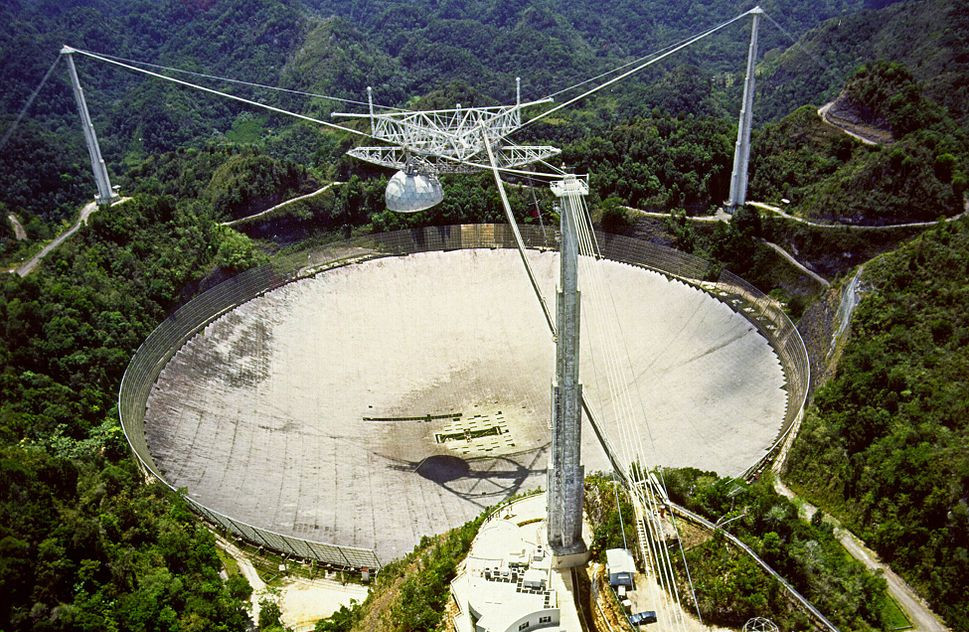The Arecibo Observatory has confirmed the existence in the Universe of a new type of superpowerful sources of radio emission.

The Arecibo Observatory radio telescope is the largest in the world using one aperture. The diameter of its reflector, located in a natural karstic funnel, is 304.8 meters. In April of this year, the laboratory staff published the results of observations that confirm the existence of such a phenomenon as short radio flashes (Fast Radio Burst or FRB). For the first time such an outbreak was registered in 2007 by the Parks Observatory radio telescope in Australia. During the following years, several more flares were detected, but all of them were recorded by the same radio telescope. Now the existence of FRB has been independently confirmed.
The interest of astronomers to short radio flashes is caused by the fact that they come from very long distances - about billions of light years, which indicates their enormous brightness. The power of such a flash, lasting only about a millisecond, is comparable to the gamma-ray bursts that accompany supernova explosions and the birth of black holes. Astronomers suggest that the source of such flares is a previously unknown type of space objects - blitzers . Therefore, the confirmation of their existence is of great importance, comparable to the discovery of pulsars in 1967.
Blytsar is a supermassive neutron star whose mass exceeds the Oppenheimer-Volkov limit . From immediate collapse into a black hole, a star is saved by an enormous rotational speed - centrifugal forces do not allow the star's material to fall beyond the horizon of events.
')
Blytsar has a very strong magnetic field, which, rotating with the star, "cleans" the surrounding space from matter and at the same time inhibits the rotation of the star. Sooner or later, the centrifugal forces are reduced so much that the star turns into a black hole. At the same time, a gamma-ray burst does not occur, since, according to the modern concept, it is necessary for it that the collapsing star be surrounded by an accretion disk - but around the blitz player all the substance is already swept by the magnetic field. At the moment of collapse, the star itself - the source of the magnetic field - turns out to be beyond the event horizon and can no longer interact with this magnetic field. As a result, the magnetic field as if "breaks away" from the star and generates a short, but very powerful flash in the radio.
The study of short radio flares can shed new light on the formation of black holes, and, moreover, radio waves, flying over billions of light years, are distorted and interact with the intergalactic medium, which can also give new information about the structure of the Universe.
Source: https://habr.com/ru/post/223237/
All Articles